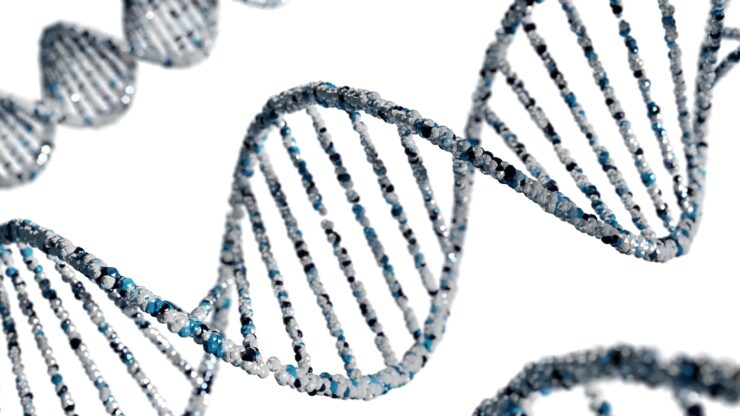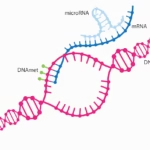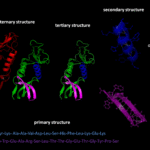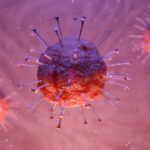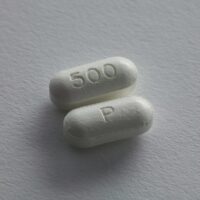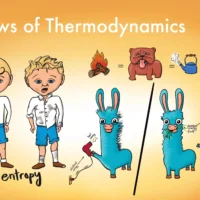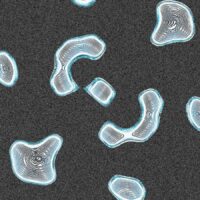The entire journey of DNA to protein begins with the synthesis of messenger RNA (mRNA). This molecule carries genetic instructions from the nucleus to the cytoplasm. Transcription starts when RNA polymerase binds to DNA at a specific promoter region, aided by general transcription factors (GTFs).
Heterogeneous Nuclear RNA (hnRNA) Formation
Radioactive Tracing of RNA Precursors
When mammalian cells are briefly exposed to radioactive [³H]uridine or [³²P]phosphate under steady-state conditions, most of the radioactivity is incorporated into large, heterogeneous nuclear RNAs (hnRNAs) located in the nucleus.
- These hnRNAs are high in molecular weight (up to 80S or 50,000 nucleotides).
- Their heterogeneous nature reflects their role as early RNA transcripts.
hnRNA as mRNA Precursors
Once these cells are transferred to an unlabeled medium, the radioactivity moves from large nuclear RNAs to smaller mRNAs in the cytoplasm.
➡️ This demonstrates that hnRNAs are the precursors of mature mRNAs.
The Machinery of mRNA Transcription
Role of RNA Polymerase II
RNA Polymerase II synthesizes all mRNA precursors in eukaryotic cells. It contains multiple conserved subunits.
Assembly of the Preinitiation Complex (PIC)
To begin transcription, RNA Polymerase II assembles with general transcription factors into the PIC at the gene promoter.
Key Components:
- TATA-Binding Protein (TBP)
Binds the TATA box in the promoter and bends the DNA to initiate PIC formation. - TFIID Complex
Includes TBP and binds additional promoter elements. - Other GTFs (TFIIA, TFIIB, TFIIH)
- Help recruit RNA Polymerase II
- TFIIH unwinds DNA and phosphorylates RNA Polymerase II, activating transcription.
Transcription Elongation
Once transcription begins, selected GTFs remain bound to allow re-initiation in future rounds. RNA Polymerase II proceeds along the DNA template, synthesizing mRNA.
CTD Phosphorylation and Activation
Structure of the CTD
RNA Polymerase II has a Carboxyl-Terminal Domain (CTD) composed of repeating heptapeptide sequences.
Phosphorylation Events
- Ser5 Phosphorylation (by TFIIH):
- Triggers release from GTFs
- Recruits 5′ capping enzymes
- Ser2 Phosphorylation (by P-TEFb):
- Enables binding of splicing and polyadenylation factors
- Supports mRNA maturation
The CTD acts as a scaffold, orchestrating the recruitment and release of over 50 mRNA processing proteins during elongation.
The Role of CTD Phosphorylation in mRNA Processing
Phosphorylation of the CTD ensures that:
- Transcription is coordinated with processing (capping, splicing, polyadenylation)
- mRNA is matured and ready for translation in the cytoplasm
- mRNA processing factors bind and dissociate in a highly regulated sequence
Fun fact: An elongating RNA Polymerase II complex can exceed 3 million daltons in mass.
Termination of Transcription
In Eukaryotes
Unlike bacteria, eukaryotic transcription does not stop at a specific DNA sequence.
- RNA Polymerase II reads beyond the 3′ end of the mature mRNA.
- Post-transcriptional modifications finalize the mRNA’s 3′ terminus (e.g., poly-A tail addition).
mRNA Structure in Eukaryotic Cells
Key Features
- Continuous Coding Region:
Encodes a specific polypeptide chain. - Cytoplasmic Localization:
Mature mRNAs are transported from the nucleus to the cytoplasm and associate with ribosomes for translation.
Noncoding Regions
Eukaryotic mRNAs include 5′ and 3′ untranslated regions (UTRs) that:
- Regulate translation efficiency
- Stabilize mRNA
- Play roles in localization and degradation
Example: Globin mRNAs have ~25% noncoding regions.
Conclusion
Understanding mRNA synthesis—from the formation of hnRNA to the phosphorylation of RNA Polymerase II—is vital to grasp how gene expression is regulated in eukaryotic cells.
This multistep, finely controlled process ensures that genetic information is faithfully transcribed and accurately processed, forming the basis for protein synthesis.

